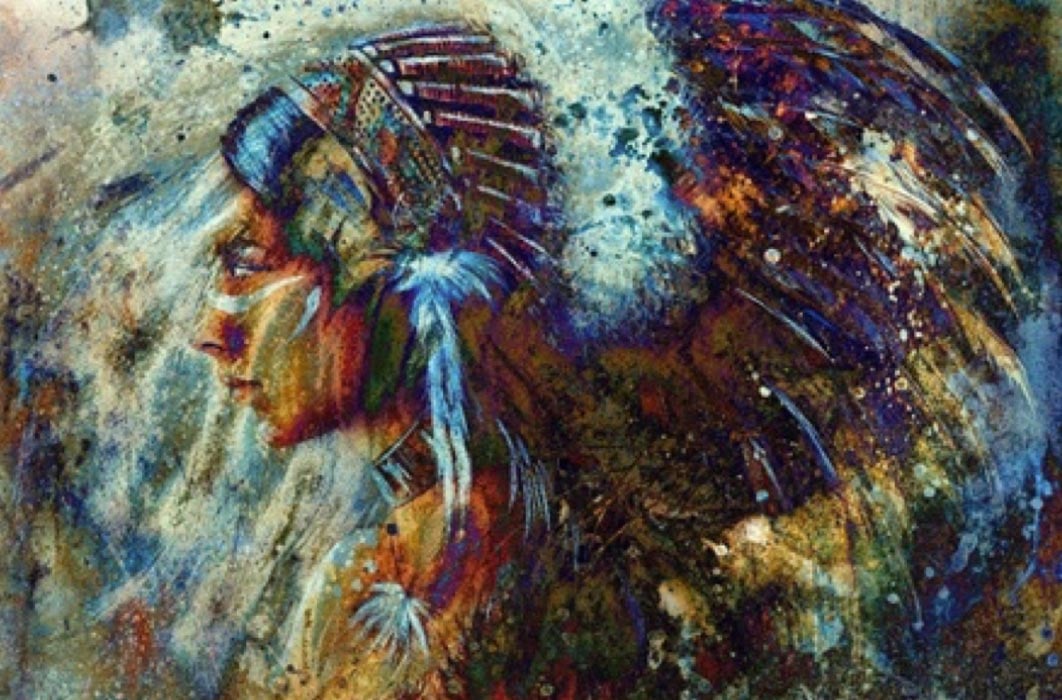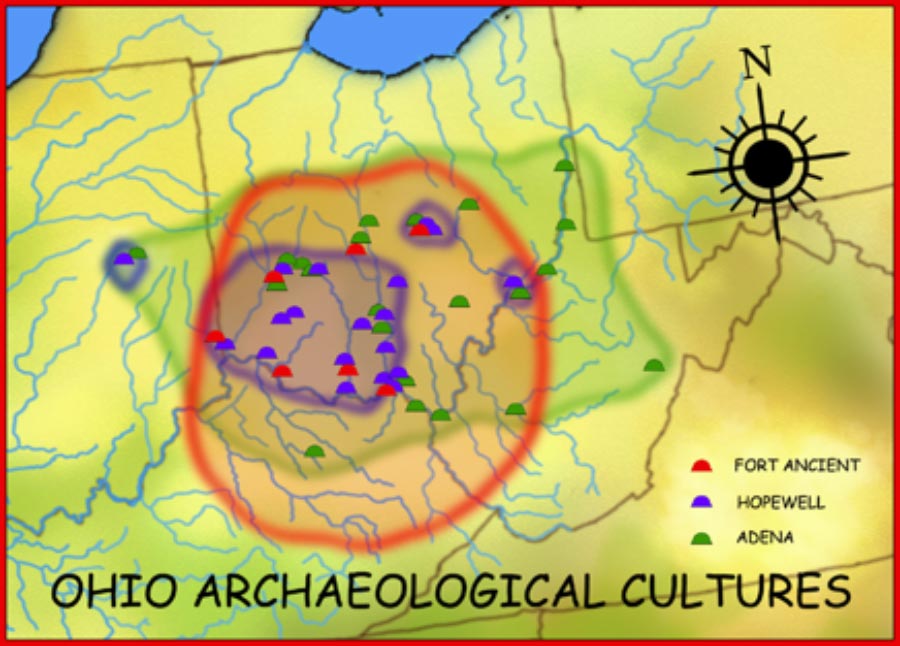
Adena-Hopewell Cosmology, Community, and Identity at the Robbins Mound
The first people to construct widespread burial mounds and earthworks in the Ohio Valley were participants in the Adena Culture, which began around 500 BC and continued until about 300 AD. Sometime around 50 BC, some Adena communities in southern Ohio—under strong influences coming from the lower Illinois Valley—evolved the more exotic and elaborate Ohio Hopewell Culture, which persisted until 400—500 AD. Thus, in the Ohio Valley, there were two contemporaneous mound building cultures for several centuries: Adena and Ohio Hopewell.

Geographic distribution of the Adena (800 BC–100 AD), Hopewell (200 BC–500 AD), and Fort Ancient (1000–1750 AD) cultures. (CC BY-SA 3.0)
Although there were variations and differences of material culture and burial practices, Adena and Hopewell expressed the same cosmological scheme, valued the same exotic power materials, and gathered to build large mounds and earthworks according to similar patterns of dispersion and coalescence. Also, it is now recognized that Adena and Hopewell groups even engaged in the co-operative construction of large scale ritual landscapes which not only shared common patterns of astronomical alignments, but also employed the same measurement unit. For these reasons and others, some archaeologists have come to simply refer to both cultures as Adena-Hopewell.





